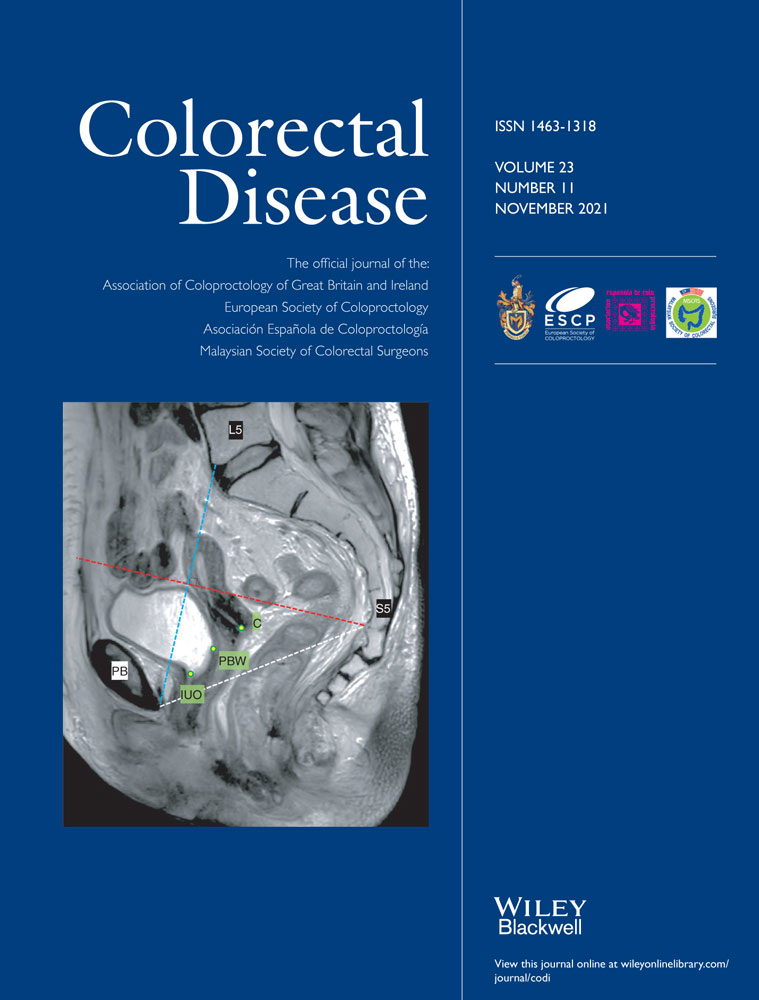Time interval between rectal cancer resection and reintervention for anastomotic leakage and the impact of a defunctioning stoma: A Dutch population-based study
This paper was presented at the International Conference on Surgical Oncology, 2021.
Funding information
No financial support was received for this research project.
Abstract
Aim
In the Netherlands, a selective policy of faecal diversion after rectal cancer surgery is generally applied. This study aimed to evaluate the timing, type, and short-term outcomes of reoperation for anastomotic leakage after primary rectal cancer resection stratified for a defunctioning stoma.
Method
Data of all patients who underwent primary rectal cancer surgery with primary anastomosis from 2013–2019 were extracted from the Dutch ColoRectal Audit. Primary outcomes were new stoma construction, mortality, ICU admission, prolonged hospital stay, and readmission.
Results
In total, 10,772 rectal cancer patients who underwent surgery with primary anastomosis were included, of whom 46.6% received a primary defunctioning stoma. The reintervention rate for anastomotic leakage was 8.2% and 11.6% for patients with and without a defunctioning stoma (p < 0.001). Reintervention consisted of reoperation in 44.0% and 85.3% (p < 0.001), with a median time interval from primary resection to reoperation of seven days (IQR 4–14) vs. five days (IQR 3–13), respectively. In the presence of a defunctioning stoma, early reoperation (<5 days; n = 47) was associated with significantly more end-colostomy construction (51% vs. 33%) and ICU admission (66% vs. 38%) than late reoperation (≥5 days; n = 127). Without defunctioning stoma, early reoperation (n = 252) was associated with significantly higher mortality (4% vs. 1%), and more ICU admissions (52% vs.34%) than late reoperation (n = 302).
Conclusions
Early reoperations after rectal cancer resection are associated with worse outcomes reflected by a more frequent ICU admission in general, more colostomy construction, and higher mortality in patients with primary defunctioned and nondefunctioned anastomosis.
CONFLICT OF INTEREST
The authors declare that no competing interests.
Open Research
DATA AVAILABILITY STATEMENT
The data supporting the results of the present study are available from the Dutch Institute for Clinical Auditing (DICA) but are not publicly available. Data are, however, available from the authors upon reasonable request and with permission of the Dutch Institute for Clinical Auditing and the Dutch ColoRectal Audit Board.




